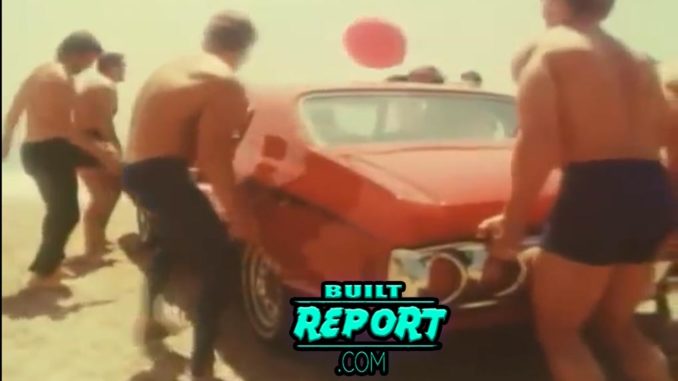
The Iron Symphony: A Tale of Steel and Muscle in the Age of Horsepower
In the turbulent landscape of the late 1960s, a new term emerged, resonating with the thunderous roar of engines and the pulsating heartbeat of a nation: Muscle Cars. Coined in 1966, this term encapsulated a breed of American-made two-door sports coupes, adorned with powerful engines, crafted for the exhilarating dance of high-performance driving.
Our narrative unfolds in the crucible of 1971, a year pregnant with change, as Chevrolet sought to unveil the juggernaut they christened “Heavy Chevy.” Eager to herald this mechanical titan, Chevrolet envisioned a cinematic spectacle, a paean to power and velocity that would echo across the airwaves. The stage was set for the creation of a television commercial that would etch itself into the annals of automotive and cinematic history.
The casting call for this visual opus reached beyond the realms of conventional actors, delving into the world of raw, unbridled power—bodybuilders and strongmen became the chosen heralds. Among the formidable ensemble were Steve Merjanian, Jim Morris, Ric Drasin, Reg Lewis, and Chuck Faust. Yet, a colossus stood at the forefront, a titan destined for global acclaim: Arnold Schwarzenegger, a name destined to become synonymous with more than just bodybuilding.
Enter the maestro behind this grand symphony of steel and sinew, Victor Haboush, a visionary director with an eye for kinetic beauty. The script, a ballet of muscle and machinery, called for feats of strength that transcended the boundaries of traditional commercial shoots.
As the cameras rolled, Arnold Schwarzenegger, in the nascent days of his ascent to stardom, seized the opportunity. It marked not only the unveiling of the “Heavy Chevy” but also a milestone in Arnold’s career—the genesis of his foray into the world of commercial acting.
In a scene etched in the collective memory of enthusiasts, Victor Haboush captured a moment of unparalleled might. The collective strength of bodybuilders and strongmen, a modern-day pantheon, manifested as they lifted the embodiment of American muscle—the 1971 Chevelle. Victor himself, a director immersed in the artistic flourish of the muscular spectacle, joined this Herculean display, deadlifting the very essence of power.
This commercial transcended its commercial roots, morphing into a cultural touchstone. It wasn’t merely a testament to the Chevrolet Chevelle; it became an ode to the spirit of an era, an era characterized by the pursuit of power, both mechanical and muscular.
As the Heavy Chevy roared into the collective consciousness, it carried with it the echoes of iron clanging, the primal grunts of strength, and the indomitable will of those who sought to harness both machine and muscle. Little did they know, within this seemingly mundane commercial shoot, they were etching a chapter in the grand narrative of power, spectacle, and the relentless pursuit of excellence.
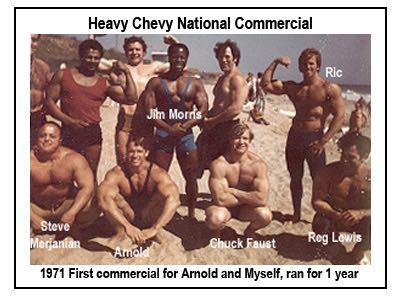
Chevelle Chronicles: A Symphony of Steel Spanning Three Epochs
In the annals of automotive history, the Chevrolet Chevelle emerges as a timeless saga, a mid-sized automobile that traversed three distinctive generations, leaving an indelible mark on the roads from 1964 to 1978. As a proud member of the General Motors (GM) A-Body platform, the Chevelle ascended to become one of Chevrolet’s crowning achievements, boasting a versatile lineup that resonated with the automotive zeitgeist of its time.
The Chevelle’s canvas was broad and varied, painted with an array of body styles that catered to diverse tastes and preferences. Whether cruising in the sleek confines of coupes, savoring the spaciousness of sedans, feeling the wind in convertibles, or embracing the practicality of station wagons, the Chevelle offered a symphony of options to the discerning driver.
Within this automotive orchestra, the Super Sport versions played a spirited tune, contributing to the Chevelle’s allure until the culmination of the 1973 model year. Lagunas stepped into the limelight next, gracing the streets with their presence from 1973 to 1976, further enriching the Chevelle’s evolutionary tapestry.
Following a three-year hiatus, the Chevelle lineup welcomed back a familiar face—the El Camino, seamlessly reintegrated into the family as a testament to the enduring legacy of this mid-sized marvel. In a harmonious convergence, the Chevelle also provided the genetic blueprint for the Monte Carlo, making its debut in the automotive scene in 1970, adding a touch of luxury to the Chevelle’s lineage.
Amidst this metamorphic journey, the Malibu rose to prominence as the apex model through 1972. In a symbolic passing of the torch, the Malibu took center stage, eclipsing the Chevelle nameplate with its redesigned, downsized form for the model year 1978. This transition marked not an end but a transformation, as the Chevelle’s spirit lived on within the contours of the Malibu, bridging eras with elegance and innovation.
As the Chevelle’s final notes echoed through the pages of automotive history, its influence reverberated far beyond its production years. A saga spanning three epochs, the Chevrolet Chevelle remains a testament to Chevrolet’s commitment to crafting automobiles that not only endure the test of time but also etch themselves into the collective memory of enthusiasts and aficionados alike.
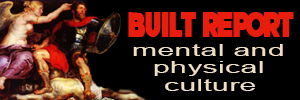
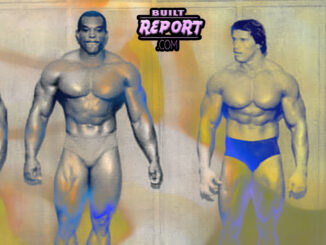
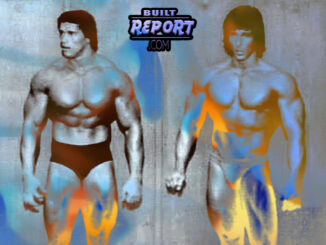
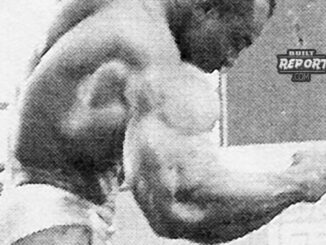
Be the first to comment